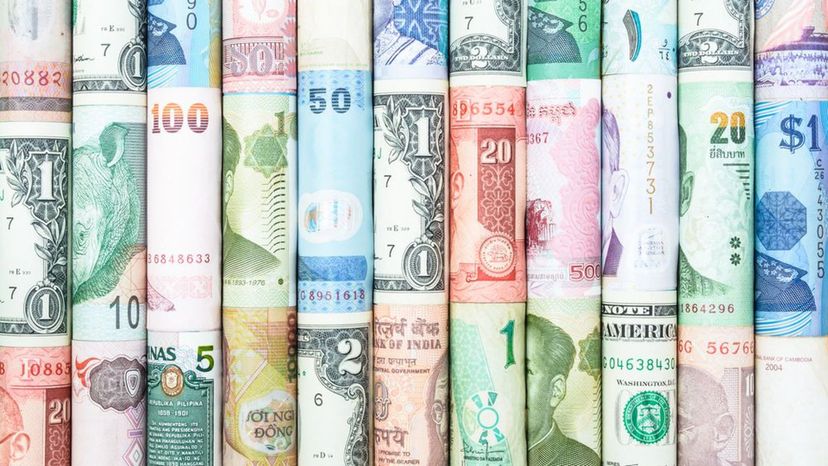
Image: Shutterstock
About This Quiz
In 1999, 11 countries adopted the Euro as their primary currency, and soon after Greece joined in. With so many changes to global currency since 1999, how many do you think you can name? The following are a mix of currencies displaced by the Euro as well as modern currencies. How many can you name?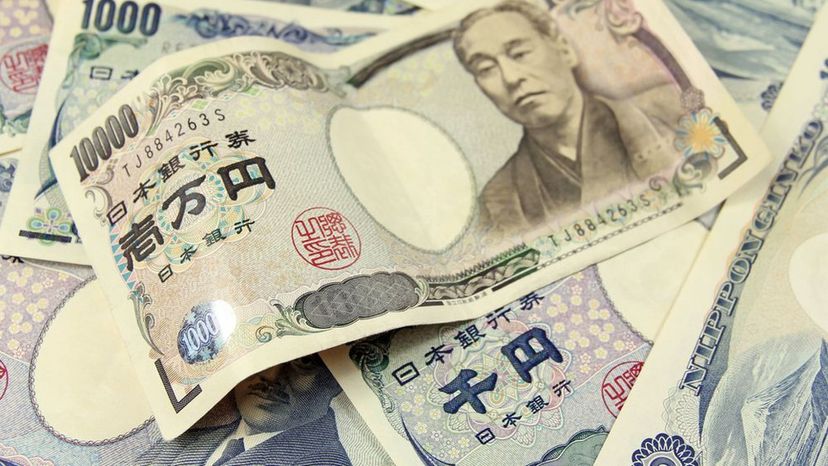
Shutterstock
Which world currency is shown here?
Franc (Switzerland)
Yen (Japan)
The symbol for the Japanese Yen looks like a capital “Y” with double strokes through its leg. It is also the symbol for the Chinese yuan.
Krona (Sweden)
Peseta (Spain)
Advertisement
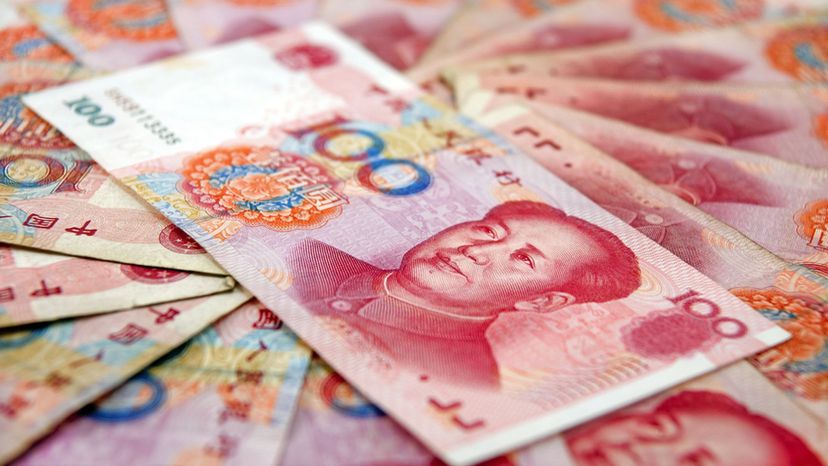
Shutterstock
Which world currency is shown here?
Deutsche Mark (Germany)
Birr (Ethiopia)
Yuan Renminbi (China)
The official name of all Chinese currency is renminbi. The yuan is its base unit. It is perfectly acceptable, however, to use the term yuan in general reference to the currency.
Sol (Peru)
Advertisement
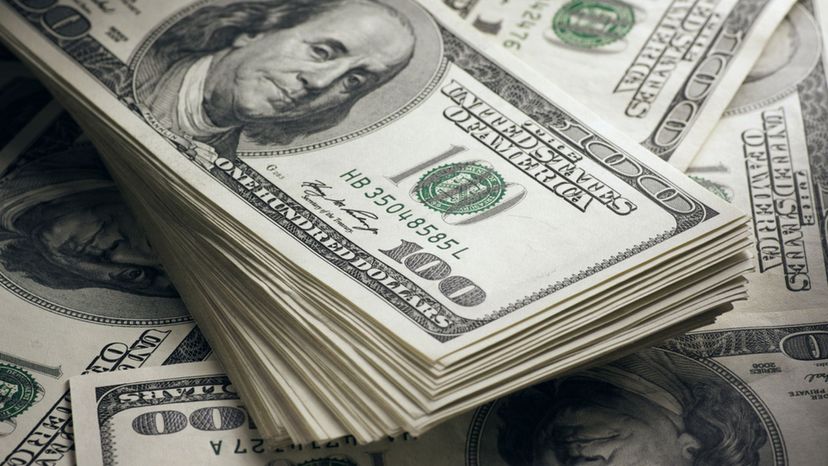
Shutterstock
Which world currency is shown here?
Hryvnia (Ukraine)
Dollar (USA)
There was no single official currency in the United States before the dollar became official. It was first issued only in the form of coins of various denominations. The paper currency came into being in 1861.
Gourde (Haiti)
Rupiah (Indonesia)
Advertisement
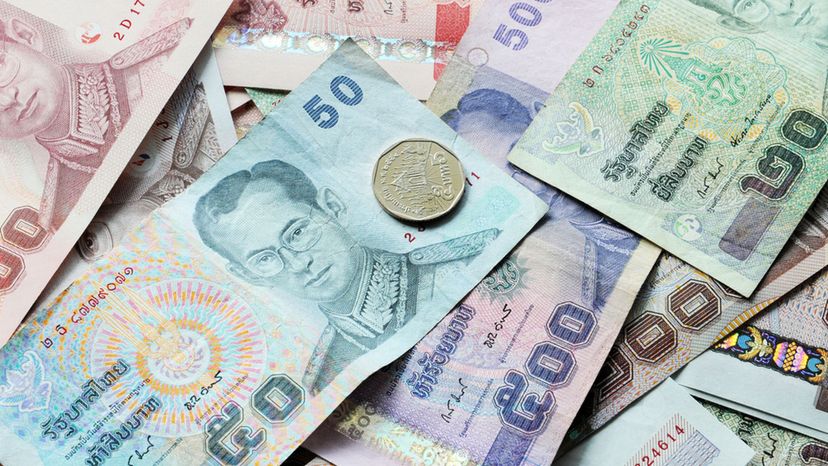
Shutterstock
Which world currency is shown here?
Baht (Thailand)
The Thai baht is subdivided into 100 satang. 1 baht is issued as a coin, with 2, 5, and 10 baht dominations also issued in coins. Paper denominations of the baht include values of 20, 50, 100, 500 and 1000 baht.
Escudo (Portugal)
Won (North Korea)
Riyal (Saudi Arabia)
Advertisement
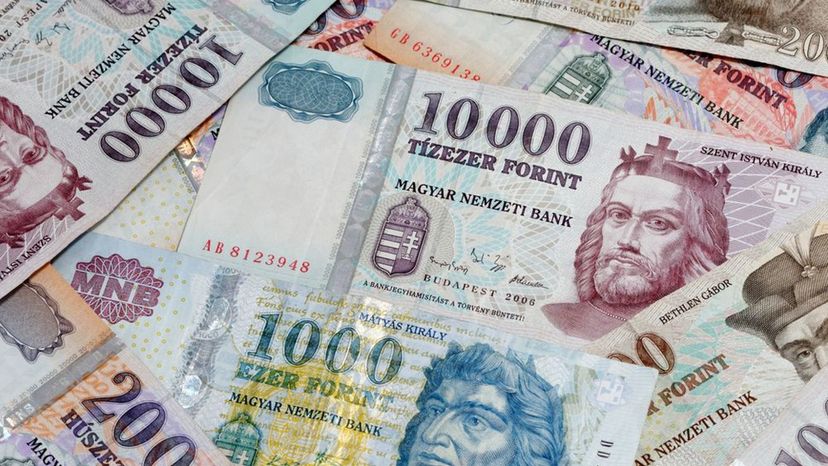
Shutterstock
Which world currency is shown here?
Won (South Korea)
Real (Brazil)
Forint (Hungary)
The modern Hungarian forint coins were first issued in 1946. The name “forint” is derived from the city of Florence where gold coins were minted in the 13th century.
Guilder (Holland)
Advertisement
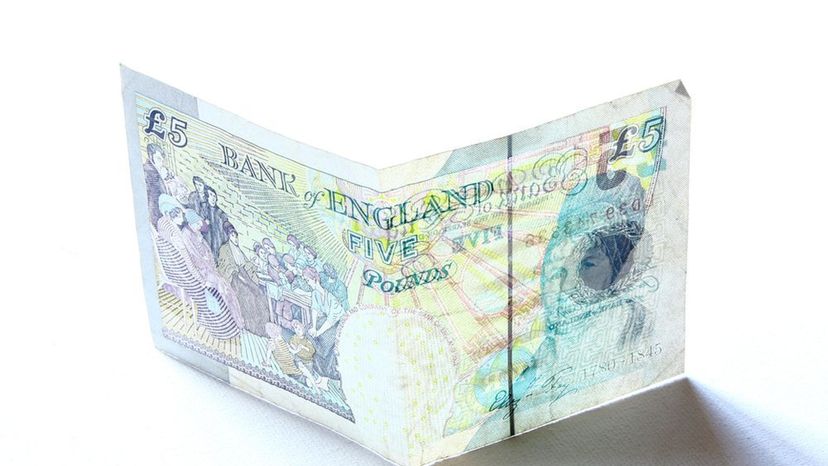
Shutterstock
Which world currency is shown here?
Zloty (Poland)
Pula (Botswana)
Shekel (Israel)
Pound (Britain)
The pound sterling holds the distinction of being the oldest currency still in use. Before 1971, 1 pound was equivalent to 240 pence (plural form of penny). With the adoption of decimals, this was changed to 100 pence in a pound.
Advertisement
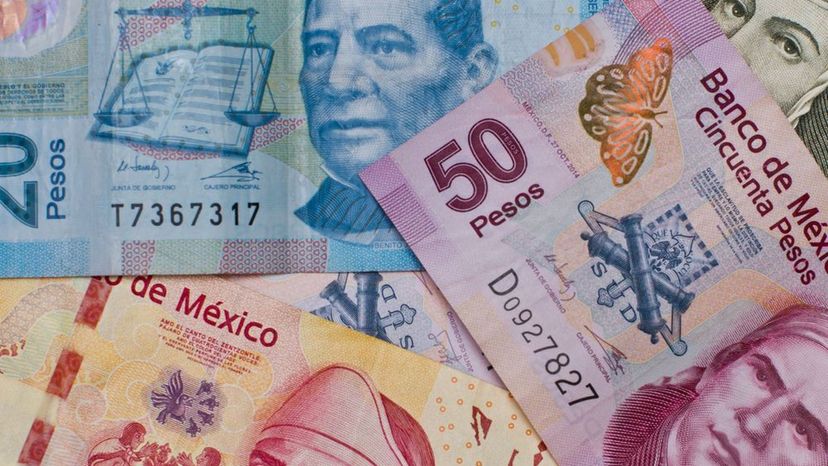
Shutterstock
Which world currency is shown here?
Dirham (Moroccan)
Peso (Mexico)
The word “peso” is Spanish for “weight.” Many early currencies were actually based on the weight of the metal used to make the coins. Several of the former Spanish colonies still retain the name “peso” for their currencies.
Lev (Bulgaria)
Euro (European Union)
Advertisement
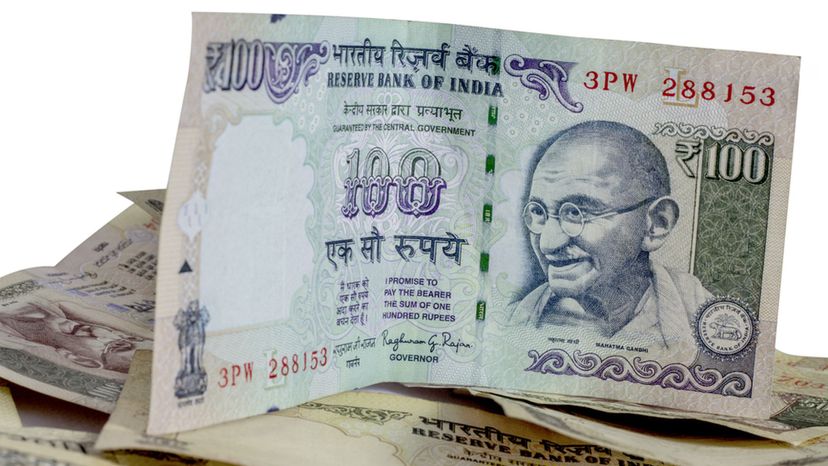
Shutterstock
Which world currency is shown here?
Lira (Turkey)
Drachma (Greece)
Rupee (India)
On July 15, 2010, the Indian rupee received its own designated symbol. Before this, the letters Rs and Re were used as a shortened form for rupee. The new symbol was designed by a university student as part of a competition put on by the Indian government to find a unique sign for the Indian rupee.
Rial (Oman)
Advertisement
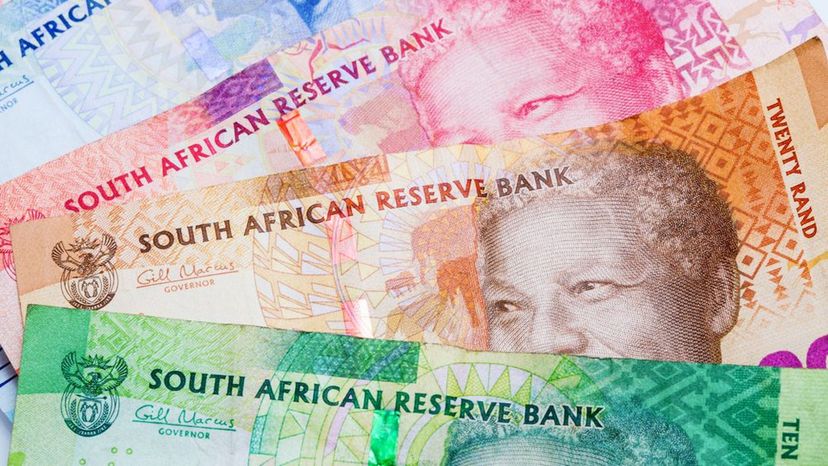
Shutterstock
Which world currency is shown here?
Rand (South Africa)
Before the rand, the British system of pounds, shillings and pence was the official currency in South Africa (a former British colony). The rand was first introduced in 1961, with a value of 2 rand to 1 pound (1 rand to 10 shillings).
Koruna (Czech)
Kip (Laos)
Dinar (Iraq)
Advertisement
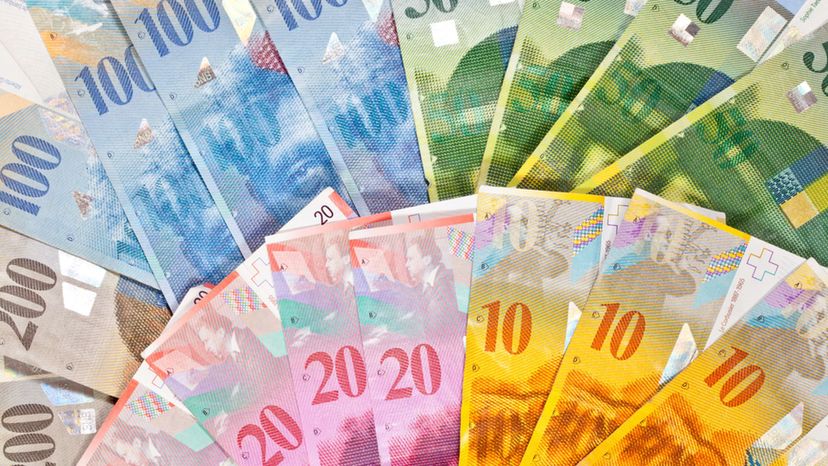
Shutterstock
Which world currency is shown here?
Hryvnia (Ukraine)
Dong (Vietnamese)
Franc (Switzerland)
The Swiss franc is the official currency and legal tender of Switzerland and its tiny neighbor, Liechtenstein. The Swiss franc banknotes feature the four official languages of Switzerland: German, Romansh, French, and Italian.
New Leu (Romanian)
Advertisement
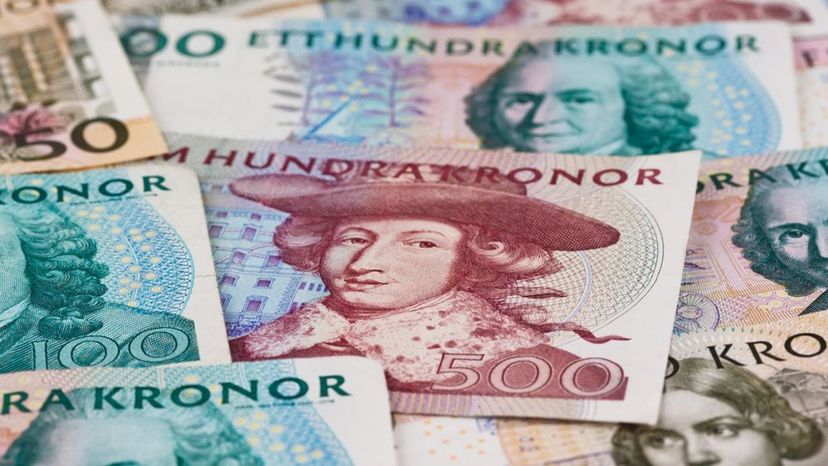
Shutterstock
Which world currency is shown here?
Colon (Costa Rica)
Deutsche Mark (Germany)
Taka (Bangladesh)
Krona (Sweden)
The word “krona” is equivalent to “crown” in English. For this reason, the Swedish krona is often called the Swedish crown by people who speak English.
Advertisement
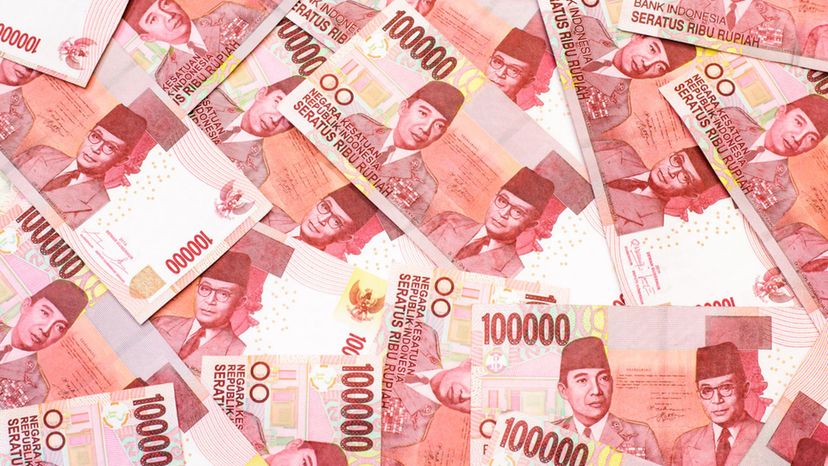
Shutterstock
Which world currency is shown here?
Rupiah (Indonesia)
The rupiah is the official currency of Indonesia. It is used across the country’s archipelago of over 17,500 islands in Southeast Asia and Oceania.
Lira (Italy)
Afghani (Afghanistan)
Lari (Georgia)
Advertisement
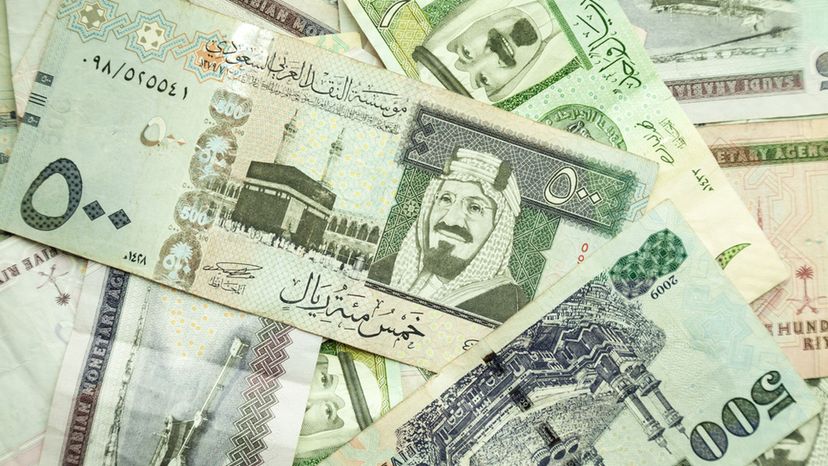
Shutterstock
Which world currency is shown here?
Kuna (Croatia)
Peso (Cuba)
Dollar (USA)
Riyal (Saudi Arabia)
The country’s official name is The Kingdom of Saudi Arabia, founded in 1932. Long before then, however, the riyal was the currency of the region the country now occupies.
Advertisement
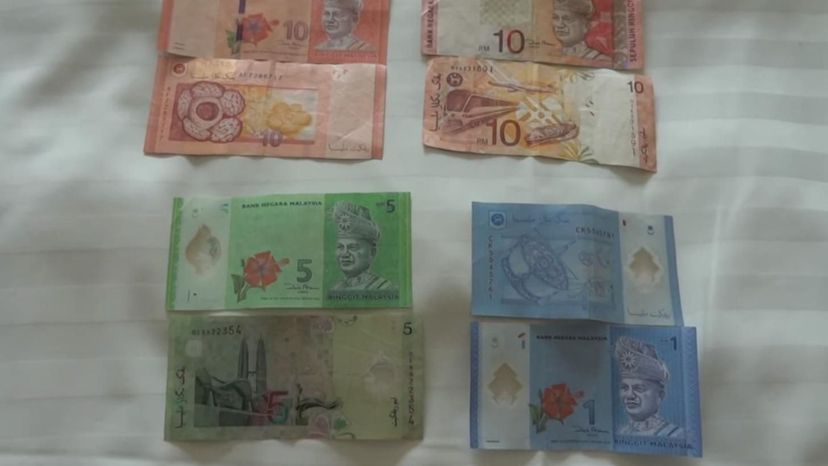
YouTube
Which world currency is shown here?
Naira (Nigeria)
Ringitt (Malaysia)
Known unofficially as the Malaysian dollar, the ringgit has been the country’s official currency since 1975. Throughout its history, Malaysia has used several currencies, including the Spanish silver dollar (twice), the Indian Rupee, and the Straits Dollar.
Baht (Thailand)
Cedi (Ghana)
Advertisement
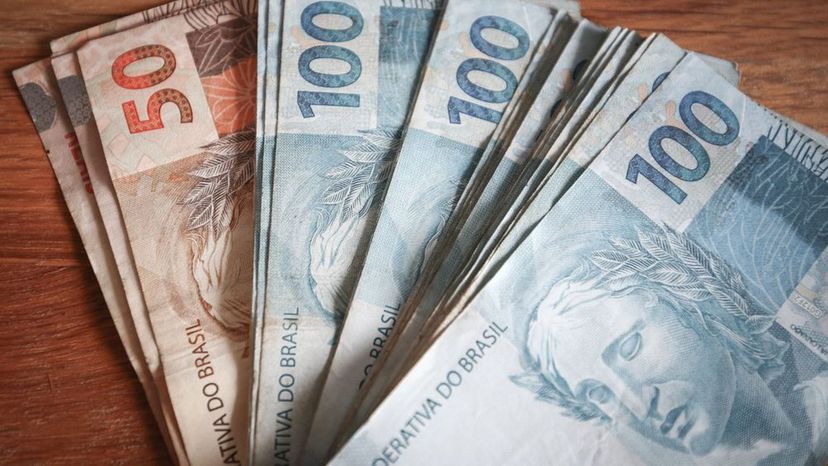
Shutterstock
Which world currency is shown here?
Real (Brazil)
The Brazilian real (plural: reais) has been the legal tender in Brazil since 1994. The country had, however, changed currency at least eight times in the 50 years prior to this. A modern Brazilian real is equivalent to 2,750,000,000,000,000,000 (or 2.75 quintillion) times the old real (of 1942).
Yen (Japan)
Peso (Mexico)
Krone (Norway)
Advertisement

Shutterstock
Which world currency is shown here?
Yuan Renminbi (China)
Rupee (India)
Shekel (Israel)
The first Israeli currency was the Israeli pound (used between June 1952 and February 1980). It was replaced by the (old) shekel (February 1980 to December 1985). The new shekel came into being on January 1, 1986.
Colon (Costa Rica)
Advertisement
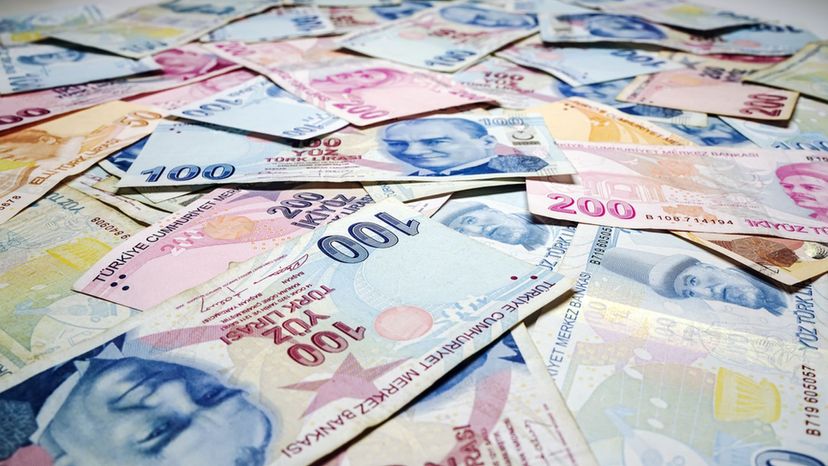
Shutterstock
Which world currency is shown here?
Forint (Hungary)
Guilder (Holland)
New Leu (Romanian)
Lira (Turkey)
Both Turkey and the Turkish Republic of Northern Cyprus use the Turkish lira as their official currency. On one side of each of the coins and notes used in the lira currency there is a portrait of Mustafa Kemal Atatürk, the country’s founder and first president.
Advertisement

Shutterstock
Which world currency is shown here?
Dinar (Iraq)
While his portrait featured prominently on several of the past Iraqi dinar notes, current notes no longer bear the image of Saddam Hussein. Also, all new notes bear wording in both Arabic and Kurdish.
Cedi (Ghana)
Zloty (Poland)
Rand (South Africa)
Advertisement
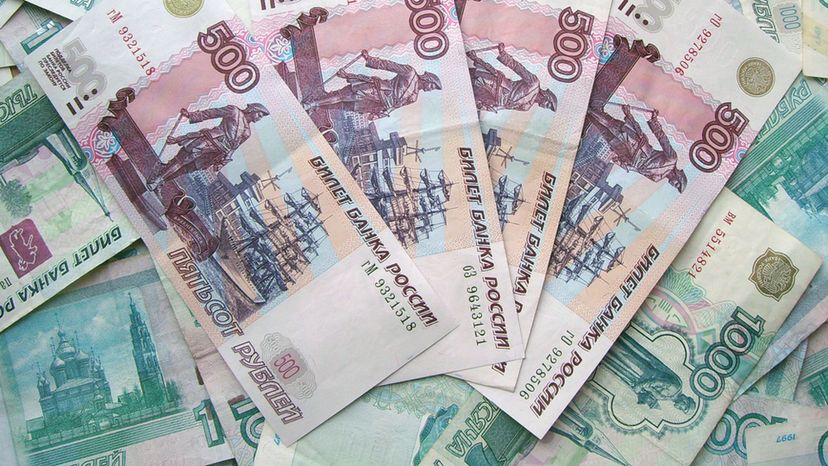
Shutterstock
Which world currency is shown here?
Peseta (Spain)
Ruble (Russia)
Although the ruble is one of the world’s oldest forms of currency, it still has no official symbol attached to it. The ruble does, however, hold the distinction of being the first currency to use the decimal system, when in 1704, it legally became equivalent to 100 kopeks.
Won (North Korea)
Sol (Peru)
Advertisement
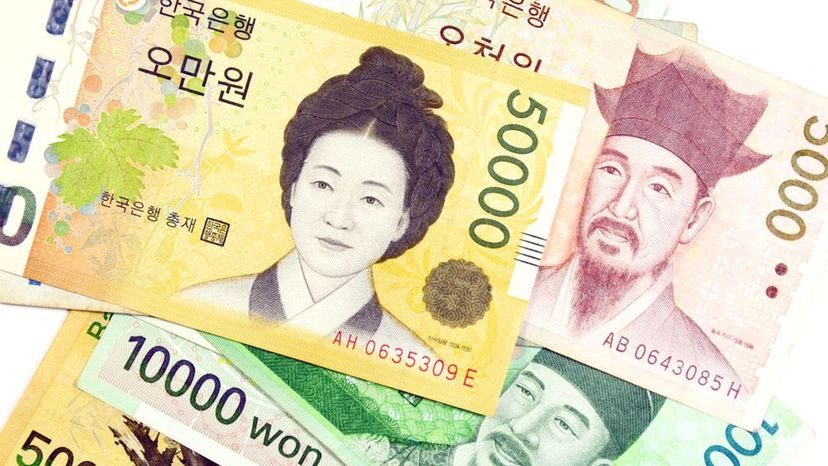
Shutterstock
Which world currency is shown here?
Gourde (Haiti)
Afghani (Afghanistan)
Dong (Vietnamese)
Won (South Korea)
The won is South Korea’s official currency. It is divided into 100 jeon. The name “won” is also used for the official currency of North Korea, but in that country, it is divided into 100 chon.
Advertisement
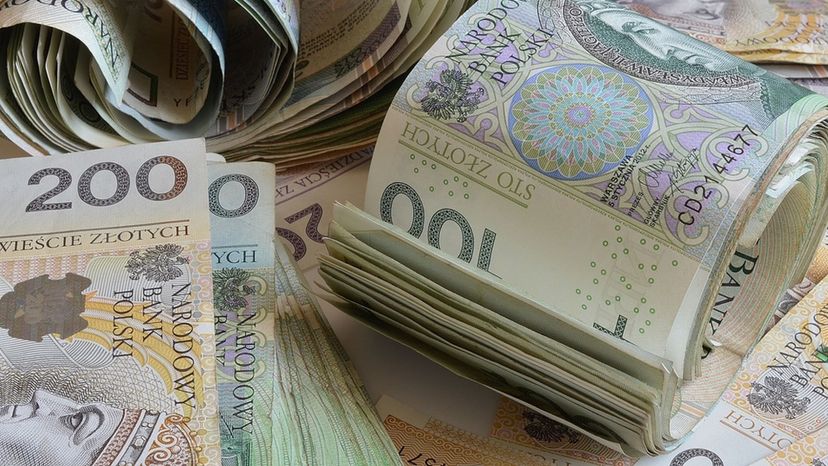
Shutterstock
Which world currency is shown here?
Peso (Cuba)
Drachma (Greece)
Zloty (Poland)
Zloty is the Polish word for golden. The zloty has been used as a form of currency since the middle ages, with the present-day zloty being subdivided into 100 groszy.
Franc (Switzerland)
Advertisement
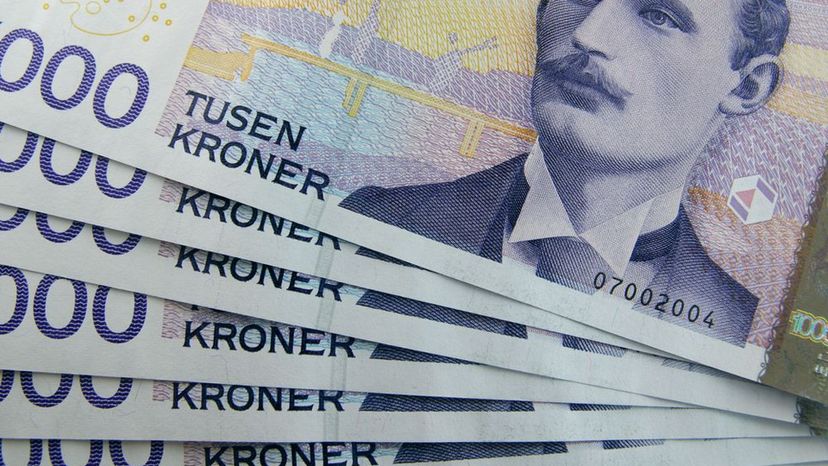
Shutterstock
Which world currency is shown here?
Krone (Norway)
The krone (translates to crown; plural: kroner) is technically known as the official currency of Norway and its three dependent territories. Those territories, however, are all uninhabited.
Pound (Britain)
Pula (Botswana)
Colon (Costa Rica)
Advertisement
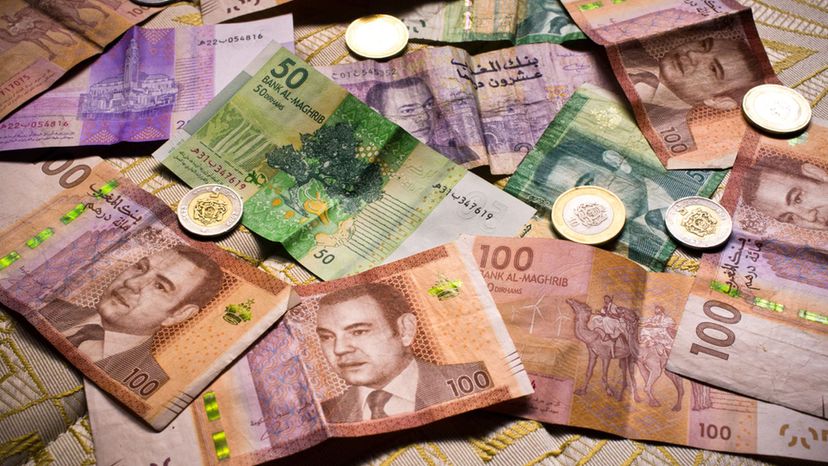
Shutterstock
Which world currency is shown here?
Ruble (Russia)
Peso (Mexico)
Dirham (Moroccan)
The name “dirham” (plural: same or darahim) is derived from the word “denarius” (a previous form of Roman currency). The latest issue of dirham banknotes features a Moroccan door. This symbolizes the country's openness and its rich architectural heritage.
Lari (Georgia)
Advertisement
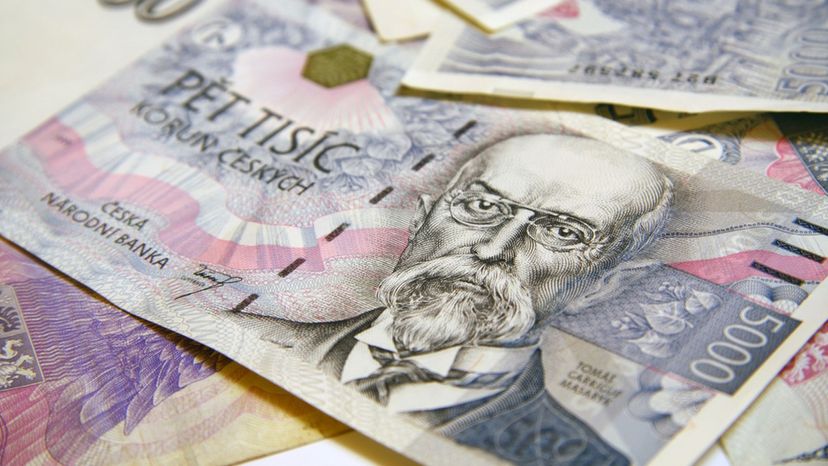
Shutterstock
Which world currency is shown here?
Koruna (Czech)
The Czech koruna is sometimes referred to as the Czech crown. It became the country’ official currency in 1993 following the dissolution of Czechoslovakia. The Euro should have replaced the koruna in 2012 but this has been delayed indefinitely.
Naira (Nigeria)
Won (South Korea)
Dinar (Iraq)
Advertisement
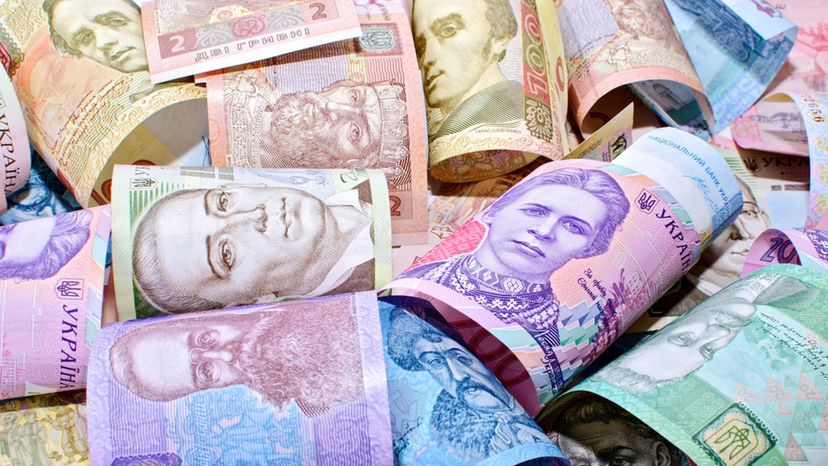
Shutterstock
Which world currency is shown here?
Rupiah (Indonesia)
Escudo (Portugal)
Kuna (Croatia)
Hryvnia (Ukraine)
The Ukrainian hryvnia has been the country’s official currency since September 2, 1996. There was a short (2-week) transition period from the previous currency to the hryvnia. During that time, merchants could accept the older currency but had to give customers their change in hryvnia.
Advertisement
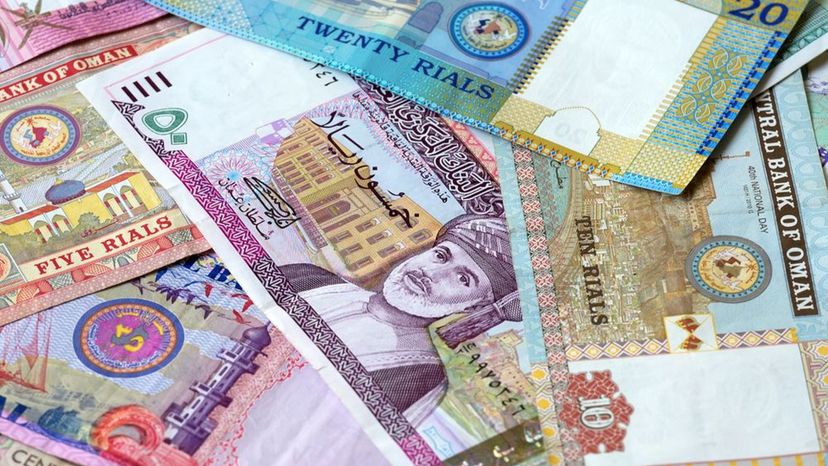
Shutterstock
Which world currency is shown here?
Lev (Bulgaria)
Rial (Oman)
The Omani rial has been the country’s legal tender since 1970. 1 rial is further subdivided into 1000 baisa.
Dollar (USA)
Ringgit (Malaysia)
Advertisement

Shutterstock
Which world currency is shown here?
Baht (Thailand)
Euro (European Union)
Dong (Vietnamese)
The Vietnamese dong has been the official currency since May 3, 1978. It was subdivided into 10 hao and 1 hao was divided into 10 xu. Neither the hao nor the xu is currently in use. The highest denomination of the dong now stands at 500,000.
Real (Brazil)
Advertisement
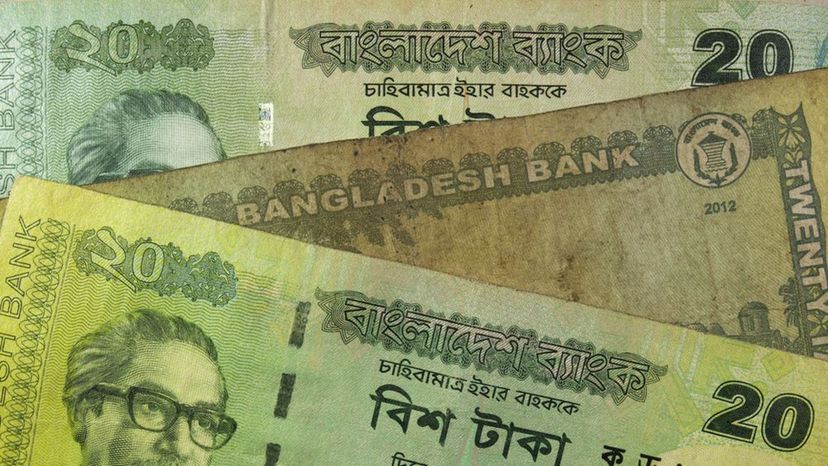
Shutterstock
Which world currency is shown here?
Taka (Bangladesh)
Many local Bangladeshis use the word “taka” to mean money of any currency. The Bangladeshi taka is divided into 100 poisha. Nowadays, the 1-taka coin is almost never used and has been very rare.
Lira (Italy)
Rupee (India)
Guilder (Holland)
Advertisement
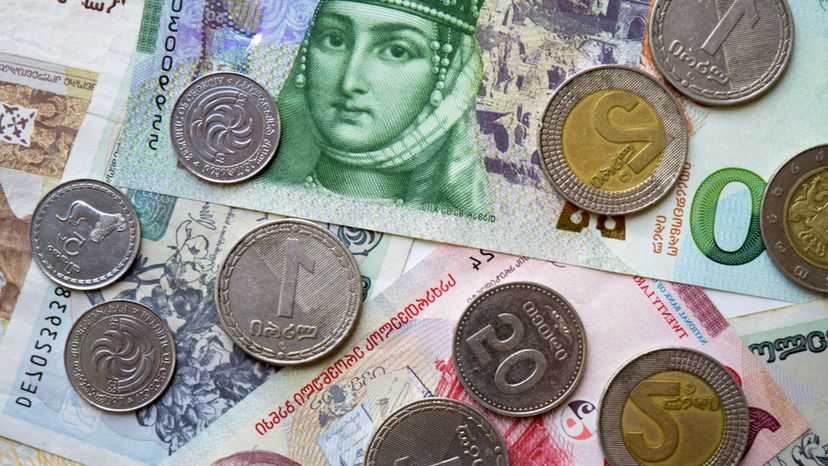
Shutterstock
Which world currency is shown here?
Yen (Japan)
Deutsche Mark (Germany)
Riyal (Saudi Arabia)
Lari (Georgia)
The Georgian lari has been the country’s official currency since October 2, 1995. The lari received its own distinct symbol on July 8, 2014, when a design by professional artist-ceramist, Malkhaz Shvelidze, won a special competition put on by the government.
Advertisement
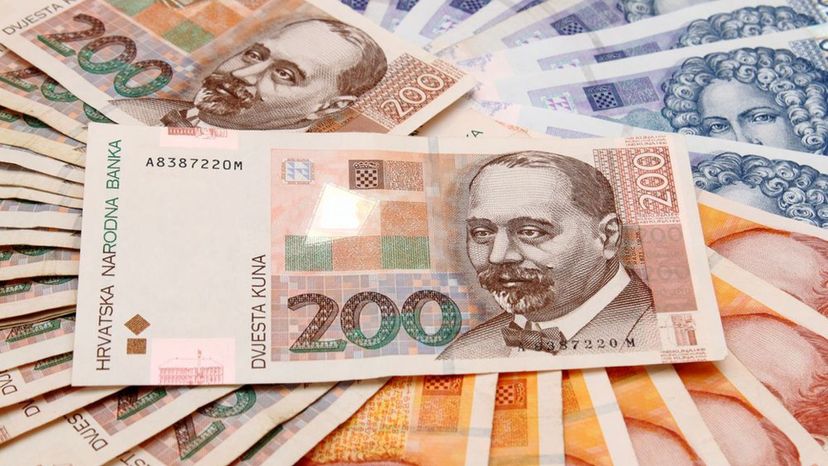
Shutterstock
Which world currency is shown here?
Won (North Korea)
Kuna (Croatia)
Plans were put in place for the Croatian kuna to be replaced by the Euro within a few years of the country joining the European Union. Although Croatia became a part of the Union on July 1, 2013, to date the kuna is still its official currency.
Lira (Turkey)
Dirham (Moroccan)
Advertisement
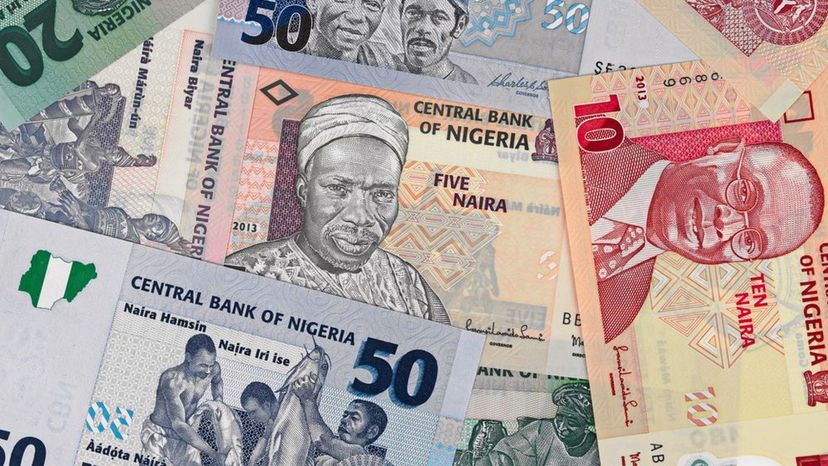
Shutterstock
Which world currency is shown here?
Naira (Nigeria)
Nigeria holds the distinction of being the last country to abandon the pounds, shillings and pence currency system. The Nigerian naira was introduced in 1973 as a replacement, with 2 naira = 1 pound.
Rand (South Africa)
Afghani (Afghanistan)
Yuan Renminbi (China)
Advertisement
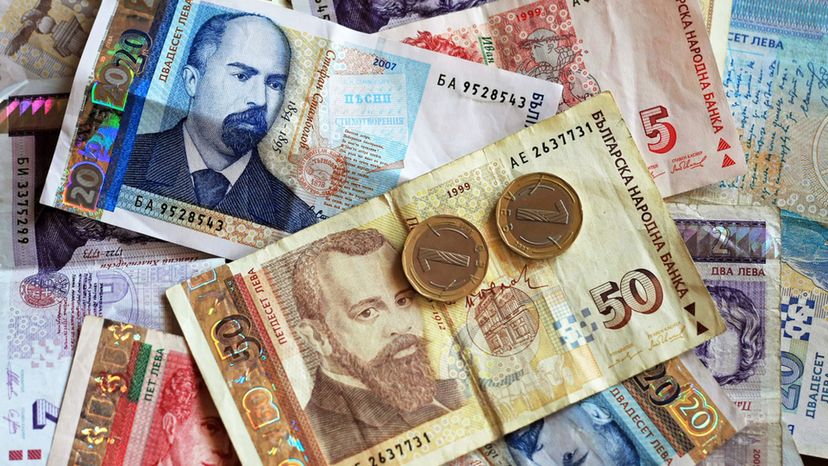
Shutterstock
Which world currency is shown here?
Pula (Botswana)
Shekel (Israel)
: Forint (Hungary)
Lev (Bulgaria)
The word "lev" means "lion" in archaic Bulgarian. Although the current lev used was introduced in 1995, the first edition of the lev to be used as the official currency for Bulgaria was issued in 1881 with a value equal to the French franc.
Advertisement

Shutterstock
Which world currency is shown here?
Sol (Peru)
The sol was issued to replace the Peruvian inti in 1991. Both sol and inti have solar connections, however, as “sol” is Spanish for sun and Inti is the Sun God of the Incas.
Ruble (Russia)
Gourde (Haiti)
Franc (Switzerland)
Advertisement

Shutterstock
Which world currency is shown here?
Krona (Sweden)
Krone (Norway)
New Leu (Romanian)
The Romanian new leu (plural lei) is subdivided into 100 bani. The word “bani” is also used in the Romanian language to generally mean money.
Peso (Cuba)
Advertisement
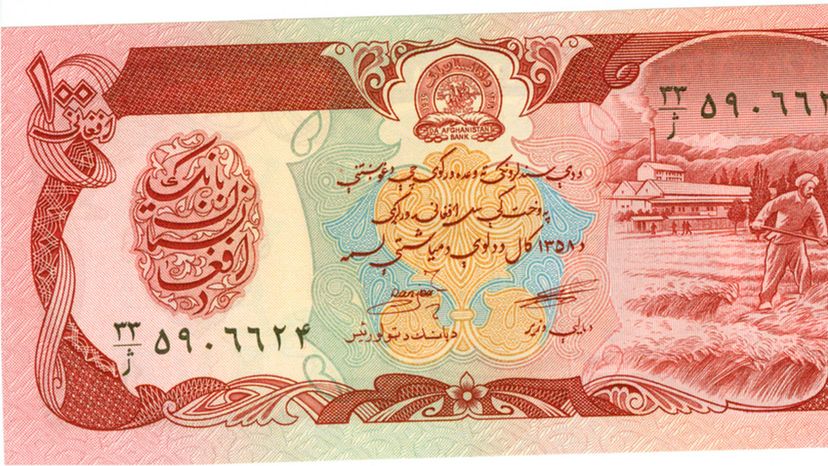
Shutterstock
Which world currency is shown here?
Peseta (Spain)
Afghani (Afghanistan)
The present version of the afghani was introduced into circulation between October 7, 2002 and January 2, 2003. There are no subdivisions of the afghani. It is minted in 1, 2 and 5-afghani coins and produced in notes of varying denominations up to 1000 afghanis.
Taka (Bangladesh)
Cedi (Ghana)
Advertisement
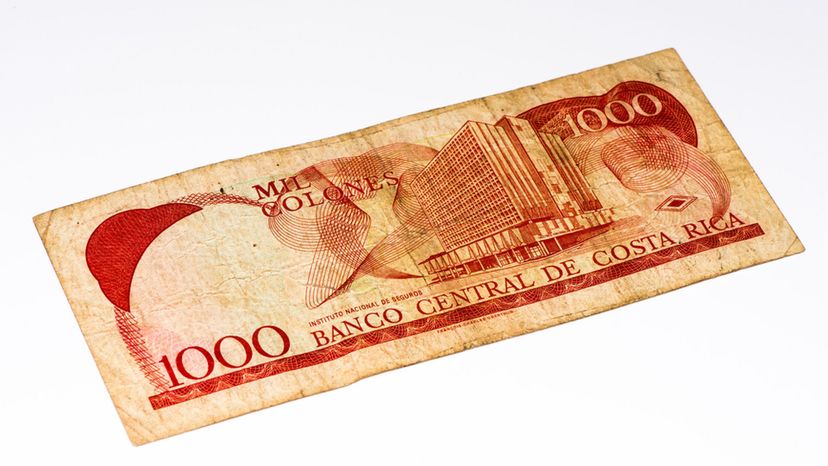
Shutterstock
Which world currency is shown here?
Colon (Costa Rica)
Although the symbol for the Costa Rican colon is reminiscent of the cent sign, it is different in two ways. The colon symbol is a capital “C” and it is crossed by 2 diagonal lines, not one.
Birr (Ethiopia)
Rupiah (Indonesia)
Drachma (Greece)
Advertisement
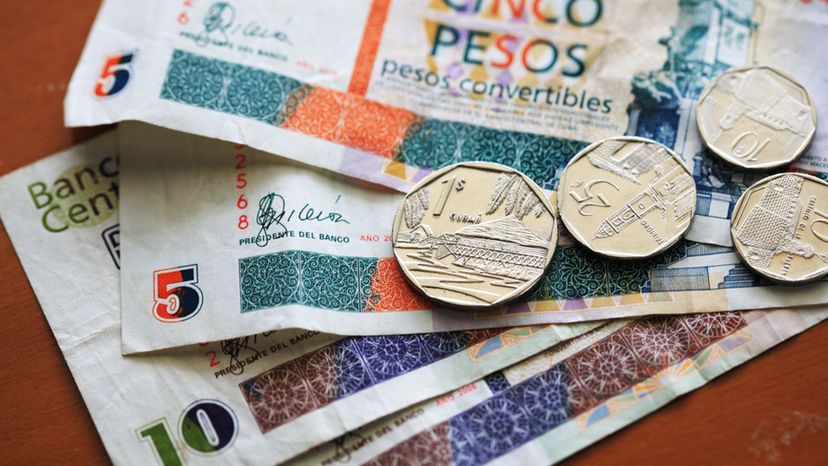
Shutterstock
Which world currency is shown here?
Naira (Nigeria)
Koruna (Czech)
Kip (Laos)
Peso (Cuba)
Cuba has two currencies – The Cuban (or National) peso and the Convertible peso. The National peso is used for staples and non-luxury items, while the convertible peso is used for luxury items and in the tourism trade. A convertible peso is roughly equivalent to 25 National pesos.
Advertisement
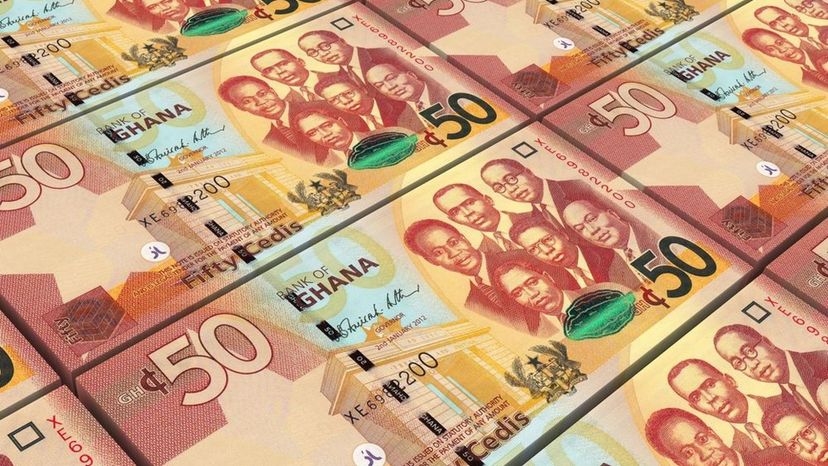
Shutterstock
Which world currency is shown here?
Pound (Britain)
Cedi (Ghana)
The symbol for the Ghanaian cedi is somewhat similar to the symbol for the Costa Rican colon. Both the Ghanaian cedi and the Costa Rican colon are symbolized by a capital “C," but the cedi has a single vertical stroke through the letter while the colon has two diagonal strokes.
Hryvnia (Ukraine)
New Leu (Romanian)
Advertisement
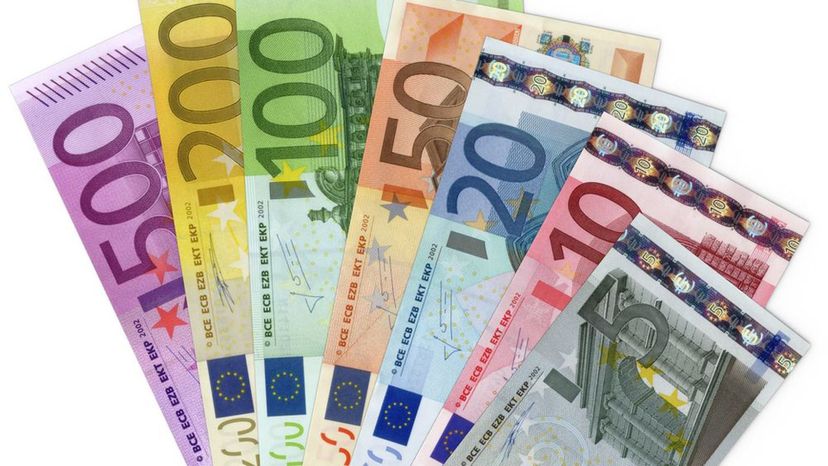
Shutterstock
Which world currency is shown here?
Dollar (USA)
Dong (Vietnamese)
Euro (European Union)
Belgian Alain Billie designed the symbol for the euro as part of a special competition. The euro is used as the official currency of the eurozone (19 of the of the European Union’s 28 member states).
Ringgit (Malaysia)
Advertisement
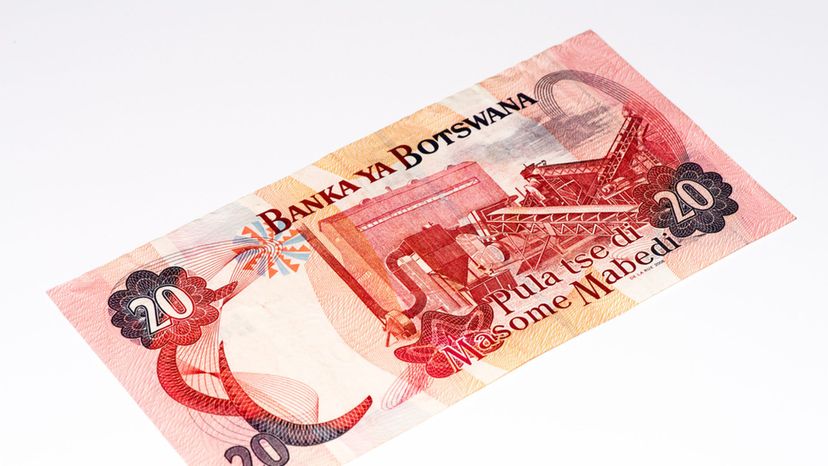
Shutterstock
Which world currency is shown here?
Kuna (Croatia)
Ruble (Russia)
Lira (Italy)
Pola (Botswana)
The word “pula” translates into “rain” and was chosen as the name of the country’s currency because of how precious rain is to the region. The Kalahari Desert covers roughly 70% of Botswana.
Advertisement
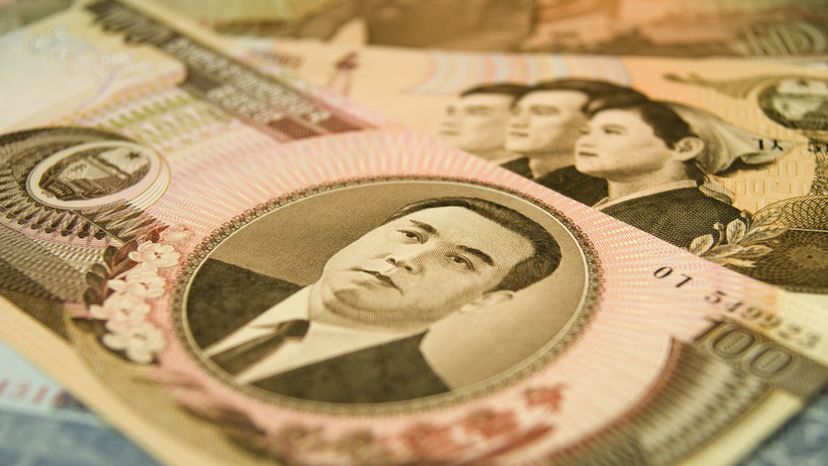
Shutterstock
Which world currency is shown here?
Koruna (Czech)
Won (North Korea)
The term “won” is used in both South Korea and North Korea as the name of the official currency. While the two currencies are by no means the same, there was a time in the countries’ history when they shared the same currency known as the Korean yen.
Dinar (Iraq)
Rupee (India)
Advertisement
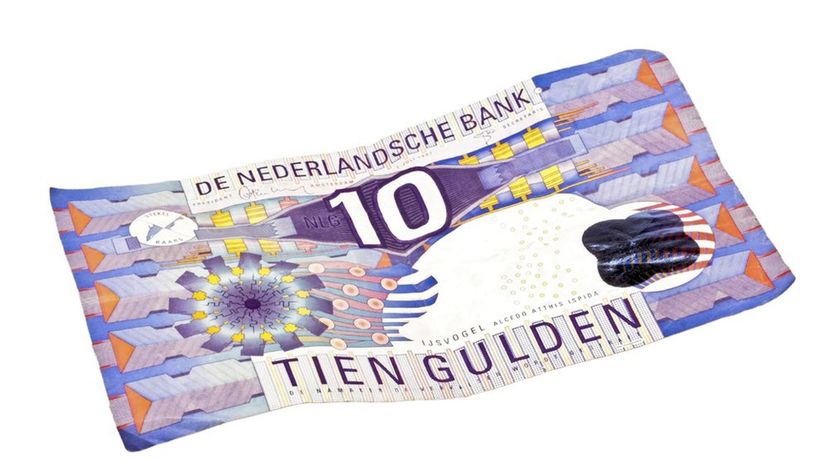
Shutterstock
Which world currency is shown here?
Guilder (Holland)
The Dutch guilders were originally made of gold and their name is derived from the word for golden. The guilder was The Netherlands’ official currency from the 17th century up to 2002, at which time it was replaced by the Euro.
Taka (Bangladesh)
Zloty (Poland)
Riyal (Saudi Arabia)
Advertisement
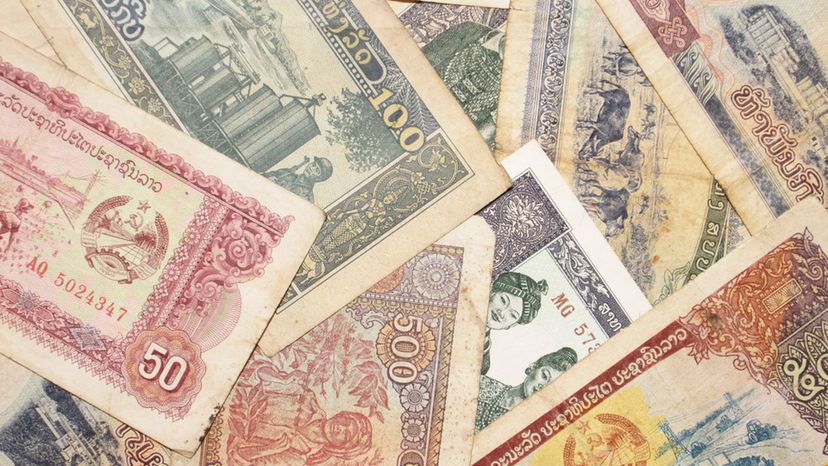
Shutterstock
Which world currency is shown here?
Peso (Mexico)
Lira (Turkey)
Kip (Laos)
Symbolized by a capital “K” with a single horizontal stroke through it, kip has been the official currency in Laos since 1952. It took the place of the French Indochinese piastre which was in use at the time.
Yen (Japan)
Advertisement
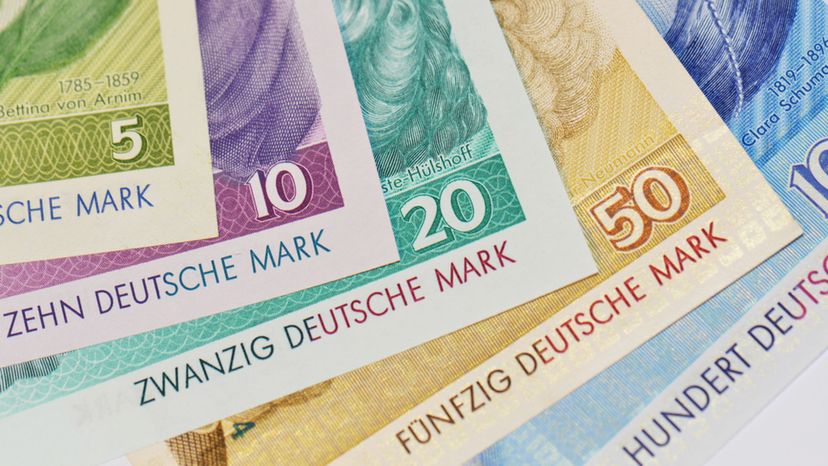
Shutterstock
Which world currency is shown here?
Dirham (Moroccan)
Sol (Peru)
Deutsche Mark (Germany)
The Deutsche mark was the official currency of West Germany from 1948 to 1990. It then became the official currency of unified Germany and remained in effect until 2002 when it was replaced by the euro.
Lari (Georgia)
Advertisement
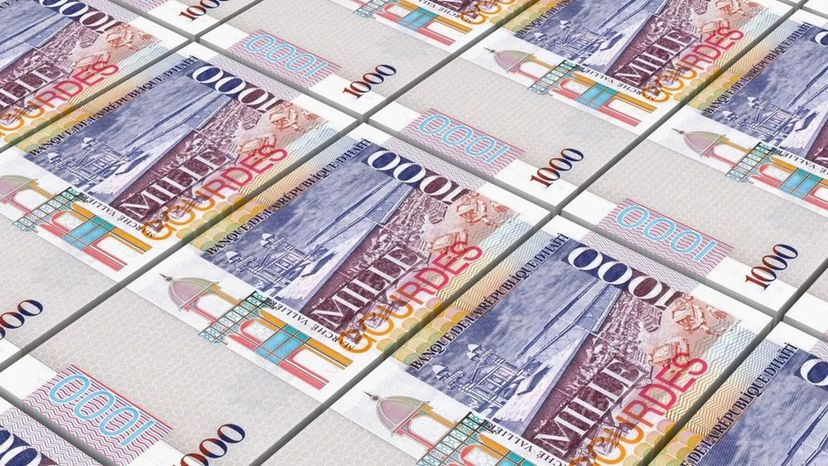
Shutterstock
Which world currency is shown here?
Gourde (Haiti)
The Haitian gourde has been a currency in Haiti since 1813 when it replaced the Haitian livre (a French colonial currency). It is divided into 100 centimes (French) or santim (Haitian Creole).
Rand (South Africa)
Forint (Hungary)
Lev (Bulgaria)
Advertisement
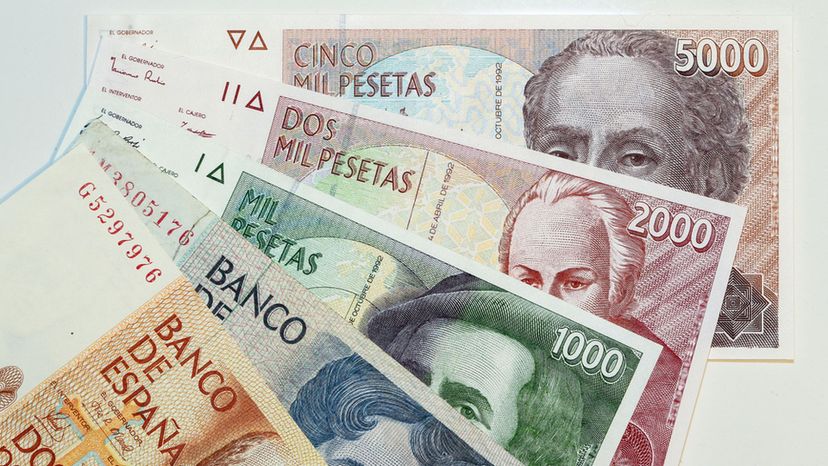
Shutterstock
Which world currency is shown here?
Rial (Oman)
Peseta (Spain)
The peseta was the official currency of Spain between 1869 and 2002. The neighboring microstate of Andorra also used the peseta (along with the French franc). The euro replaced the Spanish peseta in 2002.
Yuan Renminbi (China)
Krona (Sweden)
Advertisement
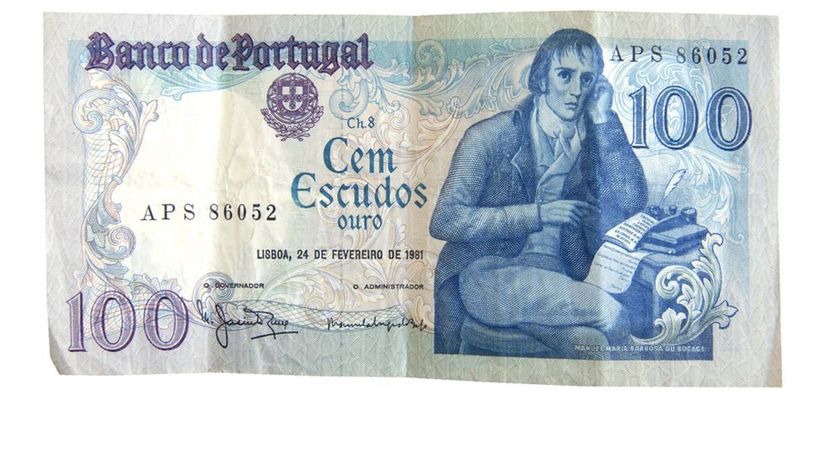
Shutterstock
Which world currency is shown here?
Won (South Korea)
Euro (European Union
Birr (Ethiopia)
Escudo (Portugal)
In 2002, Portugal adopted the euro as its official currency. Prior to this, the escudo had been used since 1722 as the Portuguese currency. The escudo was also the currency used in the Azores and Madeira, two Portuguese territories.
Advertisement
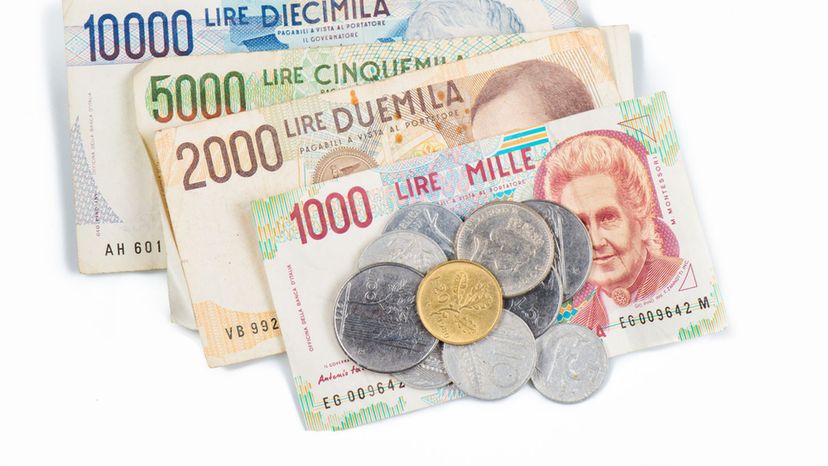
Shutterstock
Which world currency is shown here?
Shekel (Israel)
Lira (Italy)
The lira, Italy’s official currency since 1861, was replaced by the euro in 2002. Both the Vatican City and San Marino had their own versions of the lira. The three currencies were equal and legal tender in the three countries. The Vatican City and San Marino both also switched to the euro in 2002.
Kip (Laos)
Baht (Thailand)
Advertisement
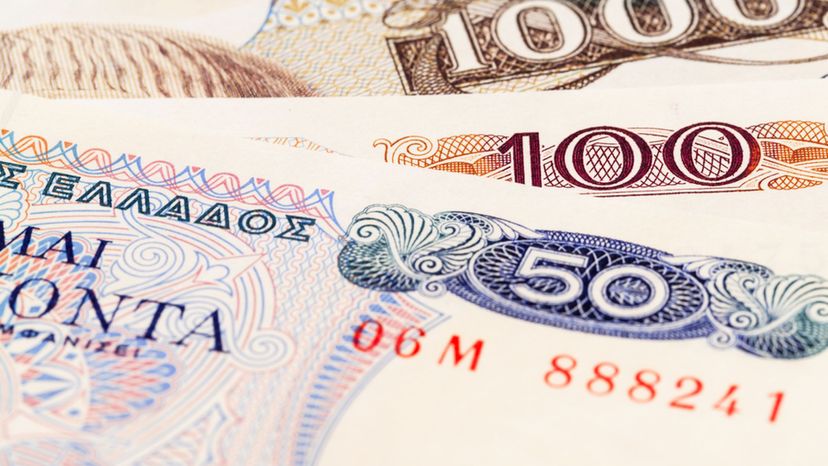
Shutterstock
Which world currency is shown here?
Krone (Norway)
Ringgit (Malaysia)
Drachma (Greece)
Drachma coins have been used in Greece since ancient times. The modern drachma first became the country’s currency in 1832 when it replaced the previous currency known as the phoenix. The latest version of the drachma was replaced by the euro in 2002.
Pound (Britain)
Advertisement
You Got:
/49
Shutterstock